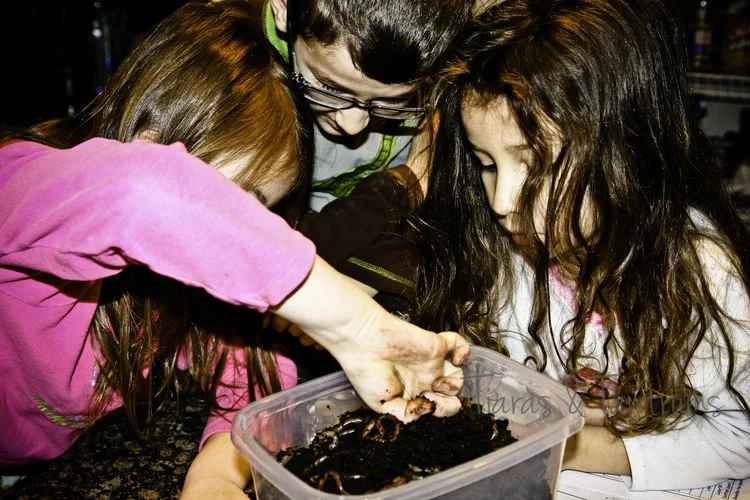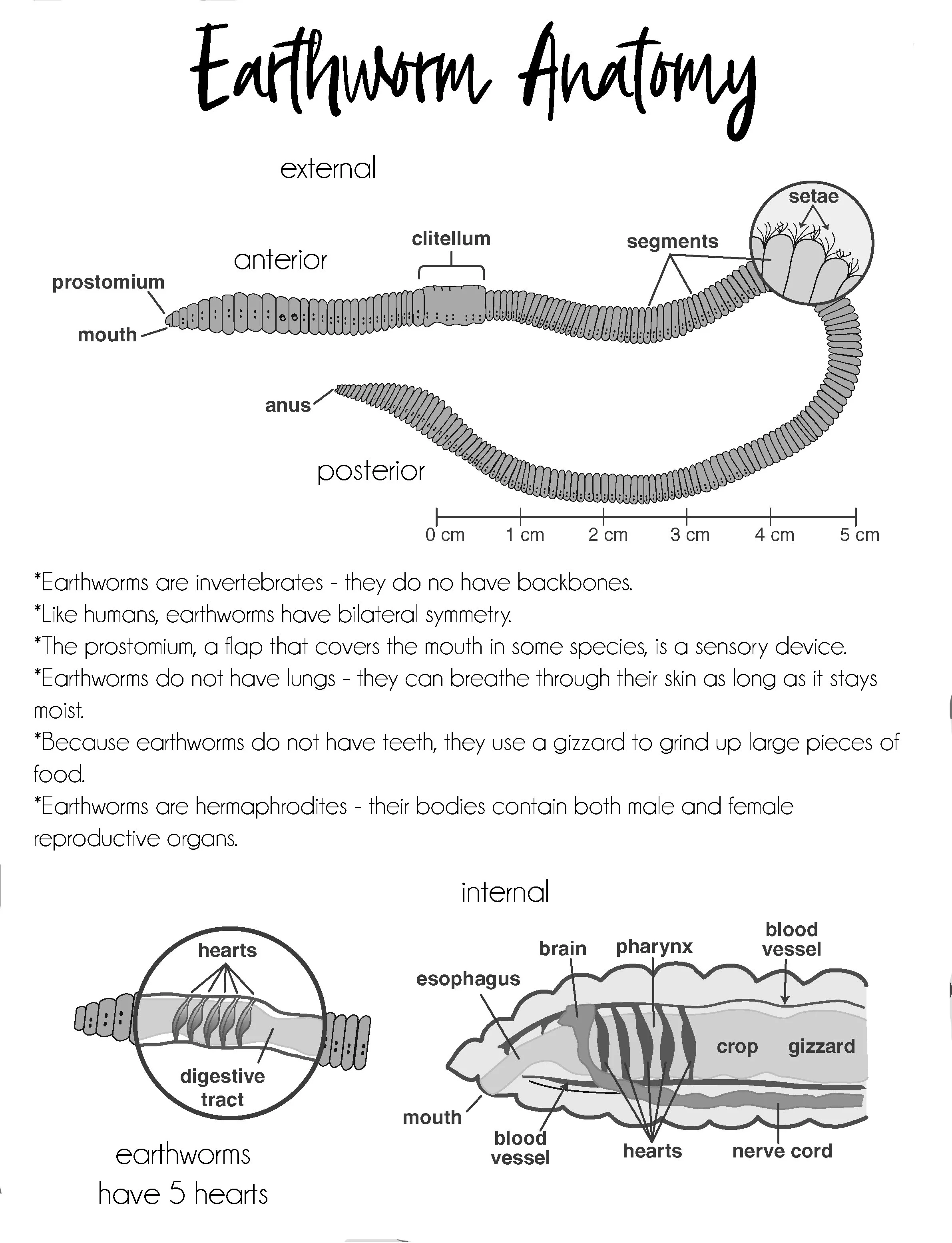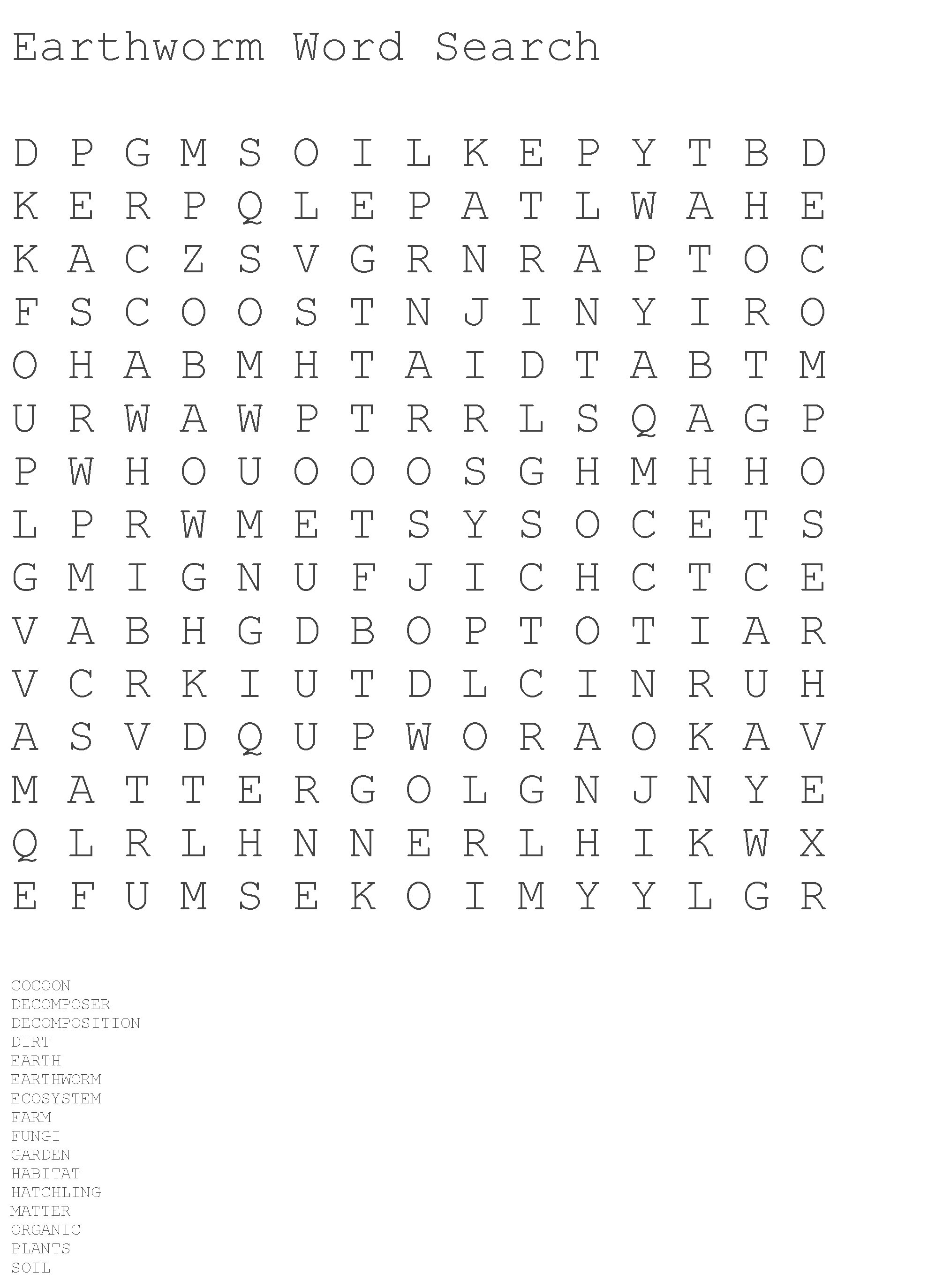Earthworms Aren't Senseless
Teach students about the worm life cycle by learning about worms and the ways they benefit gardens and farms. Through reading literature and completing hands-on activities, conduct a worm investigation and observe that worms need food, air, and space to grow.
Learn about Earthworms. Earthworms have been around for a very long time. An earthworm does not have a skeleton.
“It would be difficult to deny the probability that every particle of earth...has passed through the intestines of worms.” – Charles Darwin
I have the full Earthworm Lesson Plan available for a FREE Digital download on my Curriculum Store.
Either order ssome worms from Amazon or head to your local bait shop to pick up some nightcrawlers.
During the introduction, brainstorm answers to the following questions with the children and keep a list of ideas on the board:
What would the world look like without earthworms?
What role do earthworms play in the ecosystem?
What do earthworms eat?
How do earthworms help plants?
How do earthworms help people?
What type of habitat do earthworms need?
How can we turn our food scraps into fertilizer?
How should worms be cared for during their stay in our earthworm habitats? (At the end of a two week period, worms will be released into the school garden).
Did you know that a worm has five hearts?
Worm Exploration
Begin with the worm investigation by reviewing fun worm facts and asking your children a few questions. Give your children a disposable aluminum tray with a bit of dirt, one worm, a magnifying glass, and a pencil and paper to record their observations.
Ask your children to look closely at the worms. Can they tell which end is the worm’s head? How does the worm feel? How does it move?
Encourage them to observe as much as possible about their worm, including which body parts they can identify and how many rings the worm has around its body.
Worm Facts:
Worms do not have lungs like humans, but instead, they breathe through their skin! Worms also do not have ears, but they feel vibrations through their entire body! There are over 7000 species of earthworms in the world. A single earthworm can ingest soil up to 30 times its own weight.
Show your children the worm anatomy chart.
Do people and worms have any similarities? Any differences?
I have the full Earthworm Lesson Plan available for a FREE Digital download on my Curriculum Store.
Investigation 1: Light and Darkness - Investigate how earthworms react to light and darkness.
o Students will put their earthworm in the middle of a flat tray. One half of the pan is covered with dark paper or cardboard, and the other 1/2 is open to the light.
o Students watch the worms in the pan for about 3 minutes. Students count how many worms are in the light area and how many are in the dark area.
o Record the data on the data card and in their workbooks, repeating the experiment if they have time.
Investigation 2: Damp and Dry - Investigate how earthworms react to damp areas and dry areas.
o The students will lay down 1 dry paper towel and wet another one with the water and lay it down. Ask them to wring it out so that it is still damp but not dripping wet. Set the dry towel on 1/2 of the pan and the wet towel on the other 1/2 of the pan.
o Students place their worms in the center of the pan right where the 2 towels meet. o Watch the worms for about 3-4 minutes, and then count how many are on the dry towel and how many are on the wet towel.
o Record their data on the data card and in their workbooks, repeating the experiment if they have time.
Investigation 3: Buried in the Dirt - Students will time how quickly earthworms can bury themselves in soil.
o Students place an earthworm on top of the soil, and then time how long it takes the worm to bury itself completely. Give them only 3 minutes total for this station, even if the worm never buries itself completely.
o Students record data on the data card and in their workbooks, repeating the experiment if they have time.
Investigation 4: Leaves - Now put leaves next to the worm on the tray. What does the worm do?
o Students place an earthworm on next to some leaves, and then time how long it takes the worm to hide completely. Give them only 3 minutes total for this station, even if the worm never hides completely.
Vocabulary
decomposer: an organism that recycles nutrients by breaking down waste and the remains of dead plants and animals
decomposition: to break down into organic matter; this process is performed by bacteria, fungi, nematodes, earthworms, and others
fungi: organisms that feed on dead and decaying matter. Examples include mushrooms and molds
habitat: the environment where a particular species lives
organic matter: material in soil made from the decomposition of plants or animals. It increases the soil’s ability to hold water and air and resist compaction
Did you know that earthworms aren't senseless?
Earthworms Have Many Functions
Earthworms are about seven to eight centimeters long. They look like small, simple creatures, but they actually do a lot of the things we do: they move, digest food, circulate blood, breathe, and reproduce.
Movement
If you ever peer closely at an earthworm you will see its body is made up of about 100 to 150 circular bands, or segments called annuli. Each segment has small, stiff hairs, which helps the earthworm move.
Digestion
The digestive system includes the body parts to break down the food an animal eats. The first segment on an earthworm includes its mouth, but it has no teeth. So how does the worm chew its food? When the earthworm swallows its meal, the food makes its way to the gizzard. Tiny stones that were eaten by the worm churn in the gizzard to break down the food.
Did you know earthworms have bristles?
Worms are important for our garden because they help make the soil better. Worms eat leaves and old vegetable matter to make compost and a very valuable fertilizer called worm castings. Worms tunnel through the earth and let air into the soil like a tiller. There can be 50 or 100 worms per square foot in your garden, and there are thousands of different kinds of worms in the world.
Worms aerate the ground.
Worms are vital to soil health.
Worms can eat up to 1/3 of their body weight per day!
Worms are a source of food for animals like birds, rats, and toads.
Worms are typically only a few inches long.
Worms are capable of digging as deep as 6.5 feet.
Worms are commonly used as fishing bait.
Worms can also be known as "night crawlers" because they can be seen feeding above ground at night.
Earthworm activity dramatically changes the soil in two main ways: through biopore and cast formation. Biopores are the tube-shaped, slimy paths that form as the earthworms burrow through the soil. The biopores create channels that water can flow and drain through easily. This channeling also helps to mix the soil.
Earthworms also “eat” the soil to get nutrients from organic matter and microorganisms. As the soil is passed through their intestines, bits of organic matter are shredded up and some microorganisms are added to the soil. Their excrement, or casts, contains a lot of microorganisms and microorganism food. This enables the decomposition of organic matter into nutrients that are available for uptake by plants.
I have the full Earthworm Lesson Plan available for a FREE Digital download on my Curriculum Store.
Observe the worms for a full two weeks.
At the end of the two-week observation period, write a paragraph explaining the following: How earthworms can help reduce waste that people throw away.
Guess what we've been studying?










